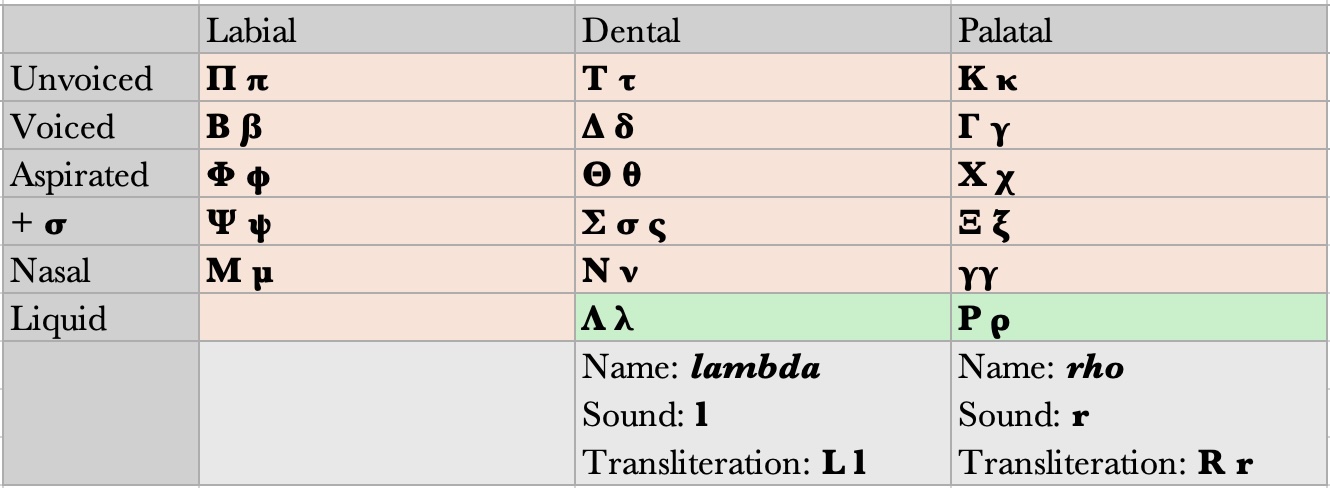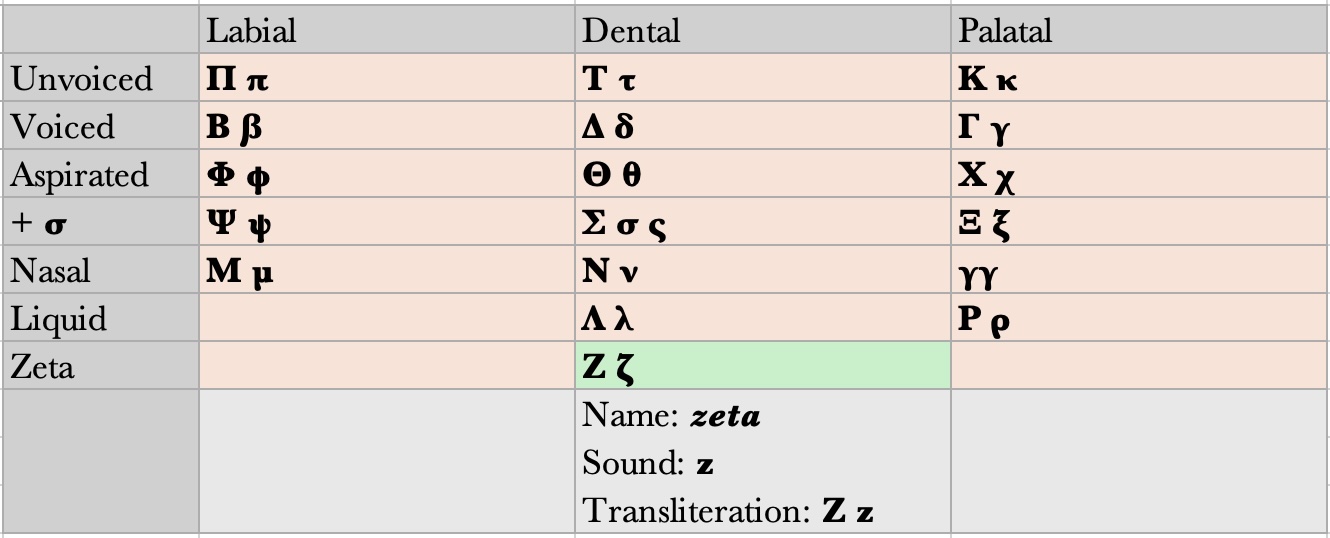2.6 While STOP consonants are made by pushing air through the mouth, NASALS are formed by pushing air through the nasal cavity. The ancient Greek nasals are similar to the English consonants m, n, and –ng. As you review the chart below, note that in Greek, the -ng sound is represented by double gamma (-γγ), not nu gamma (-νγ).
2.7 LIQUIDS are consonants produced when the tongue only partially blocks airflow through the mouth during pronunciation. Like English, ancient Greek has only two liquid consonants.
2.8 The last consonant, ζ, is a DOUBLE CONSONANT, originally representing either σδ or δσ. The sound has evolved in modern Greek into a consonant like the English z, which is how most pronounce the ancient Greek zeta today.







